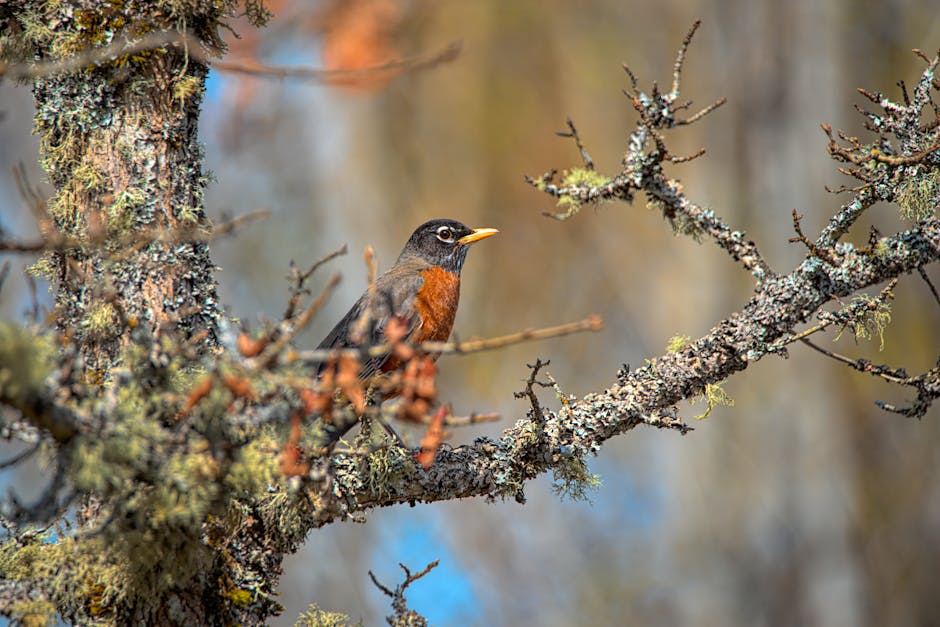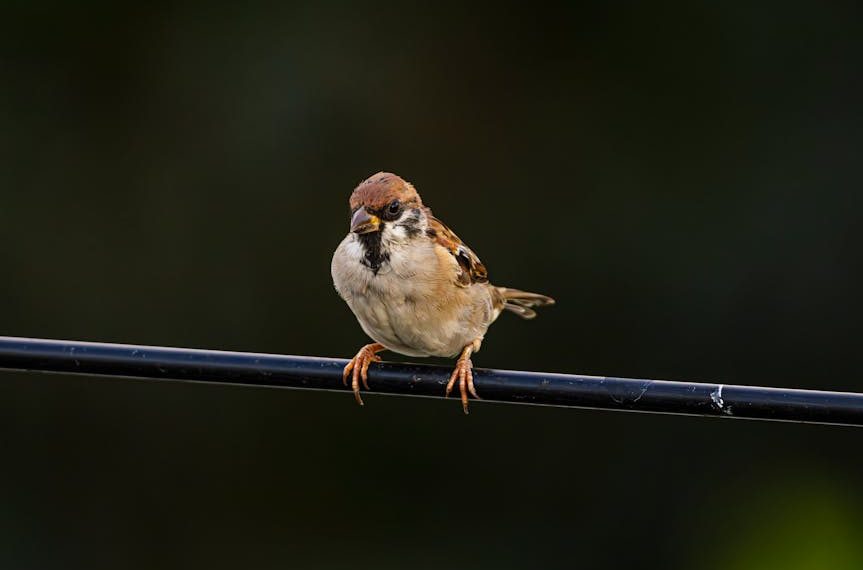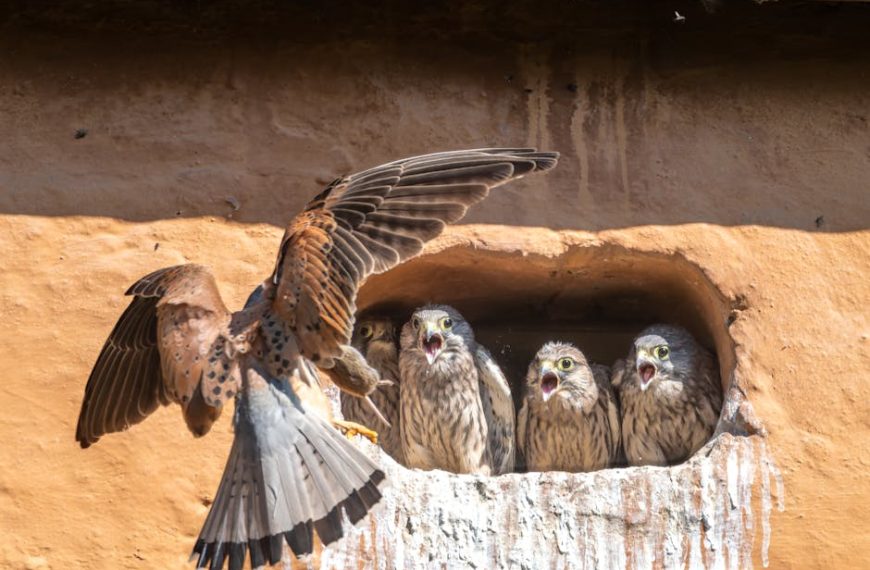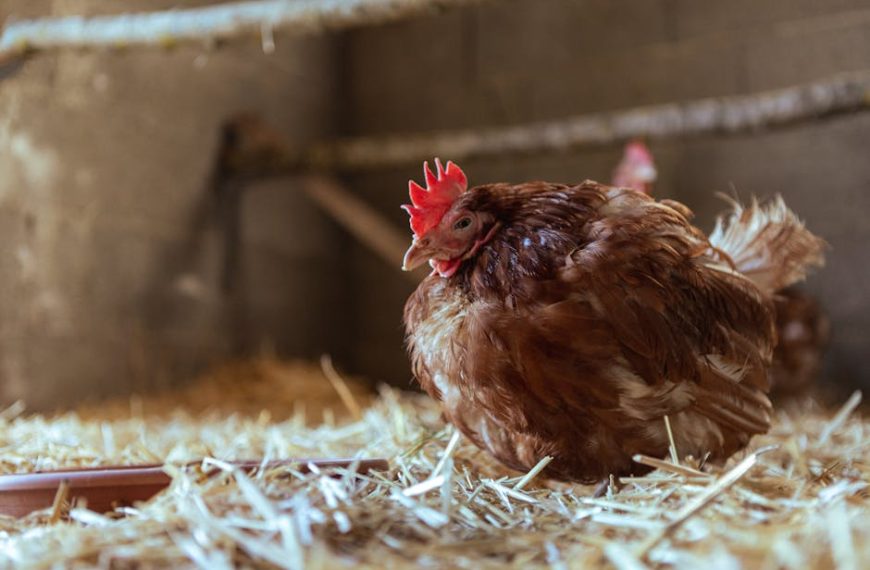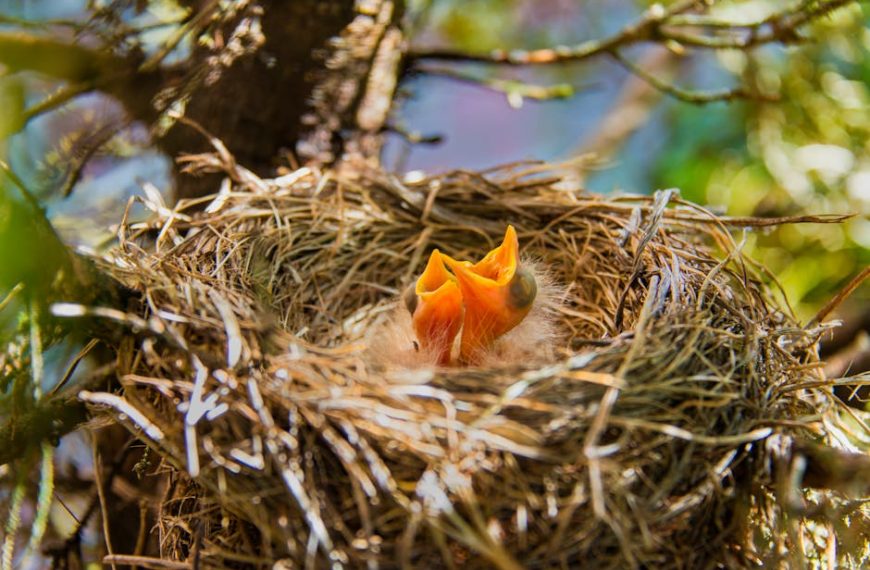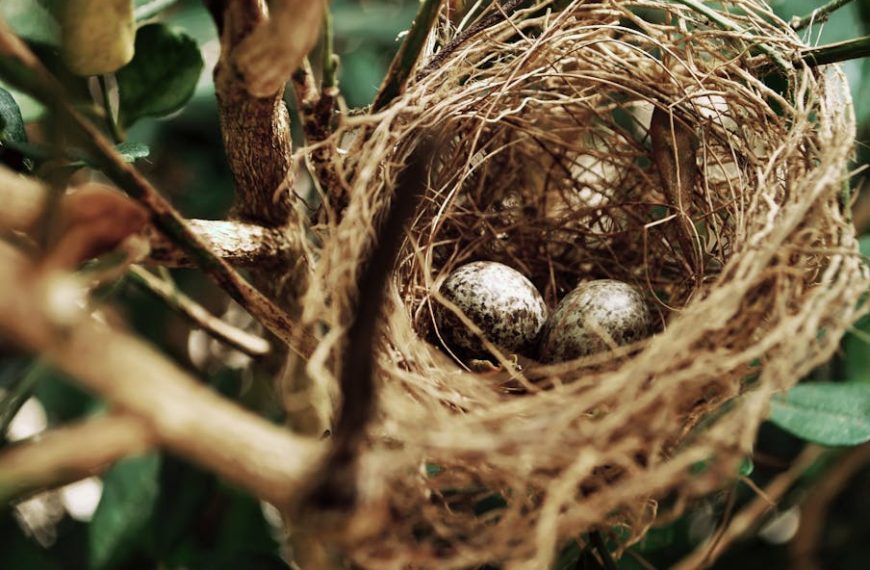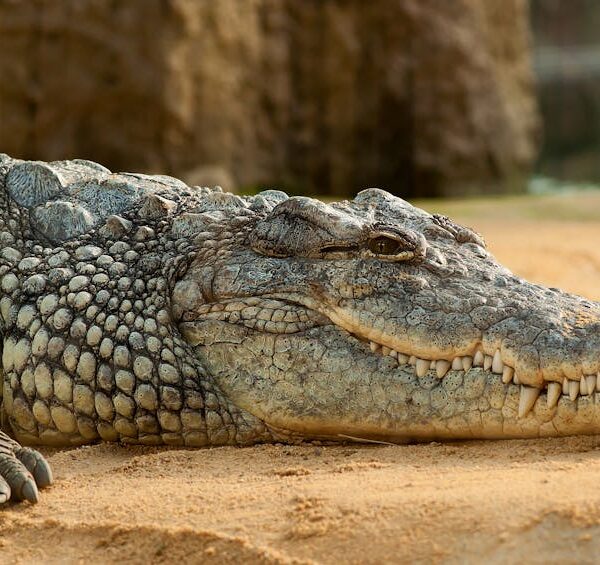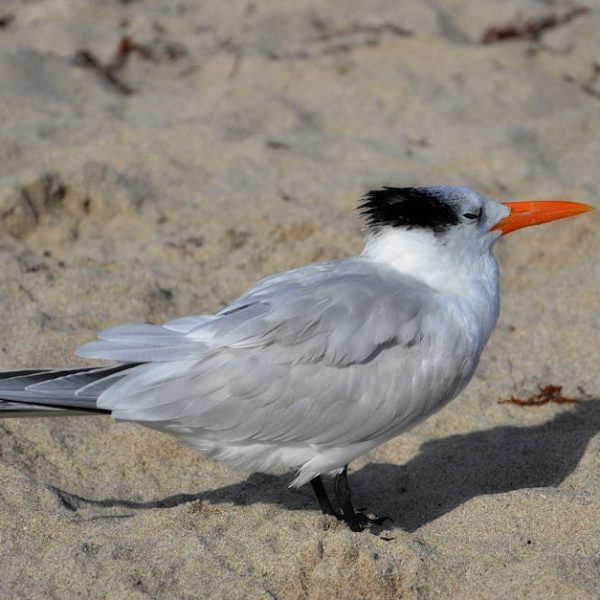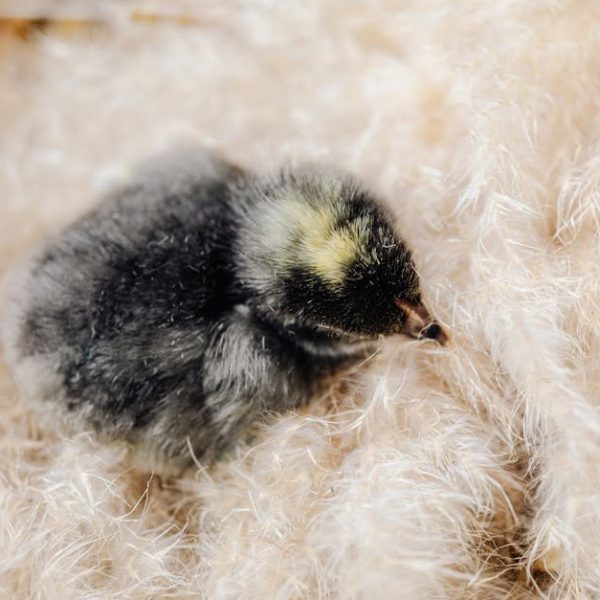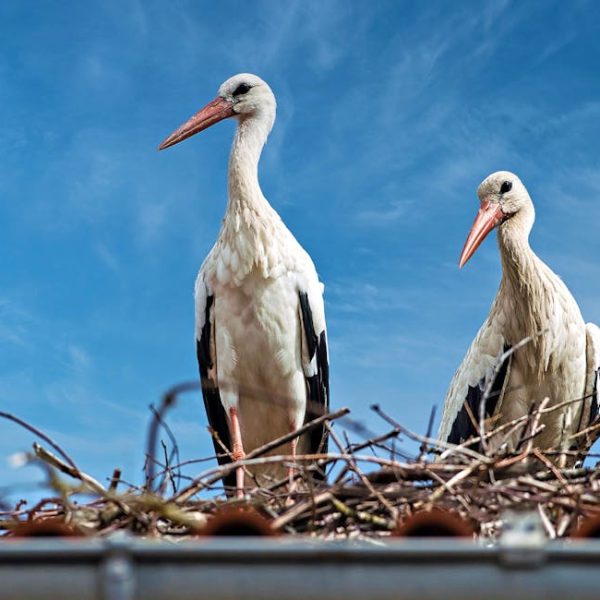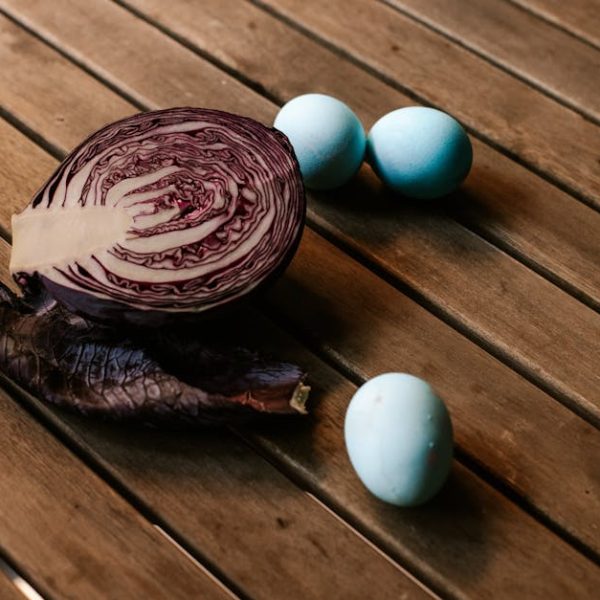Bird eggs come in a dazzling array of colors, from the purest white to the most vibrant blues. But none are quite as enchanting as the blue speckled eggs, intricately painted by nature herself. From the American Robin to the unassuming Starling, let’s delve into an exploration of these avian architects and their beautiful blue speckled offspring.
American Robin’s Beautiful Blue Speckled Eggs
Renowned for their cheerful song announcing the break of dawn, the American Robins bear eggs of exquisite beauty to match their lyrical voices. Their eggs – a dreamy powder blue – are sometimes gently speckled with brown or gray at the larger end, making each one a tiny work of natural art.
When you stumble upon an American Robin’s nest, it’s best to watch from a safe distance and resist the temptation to touch. These nests are often hidden in plain sight, amid dense shrubs or on lower tree branches.
Pro Tip: The incubation period of American Robins lasts around 14 days, with female robins diligently keeping the eggs company for most of the day. Fascinating, isn’t it?
The Blue, Speckled Eggs of Eastern Bluebirds
Eastern Bluebirds have a peaceful charm, their light blue or sometimes white eggs occasionally brushed with brown specks towards the larger end. These eggs are distinct from the American Robin’s due to their lighter hue and lesser frequency of speckling.
Compared to the American Robin’s eggs, the eggs of Eastern Bluebirds are generally paler. The Robin’s eggs tend to be more heavily speckled, while the Eastern Bluebirds’ eggs could be largely unmarked.
You are likely to find Eastern Bluebirds and their nests in rural areas or open woodlands, often near water bodies.
Mountain Bluebird’s Unique Egg Characteristics
Commonly seen in the open meadows and mountainsides of Western North America, Mountain Bluebirds bestow something truly special to nature enthusiasts: their pale blue eggs finely speckled. Their eggs seem as though a delicate blue canvas has been sprayed lightly with a contrasting color, creating a sight to behold.
Here’s a handy checklist to identify Mountain Bluebirds’ eggs effectively:
- Look for the pale blue color
- Check for finer speckling
- Count the eggs (usually five to seven)
Pro Tip: If you come across Mountain Bluebirds’ eggs during your wilderness adventure, it’s important not to disturb them. These birds are easily threatened by human presence, which can lead to them abandoning their nesting sites.
We have a lot more to uncover about other birds laying stunning blue speckled eggs. Stay with us as we explore further.
The Blue Speckled Eggs of the Wood Thrush
When it comes to the heart-stopping enchantment of blue speckled eggs, we can’t overlook the Wood Thrush. Their eggs adorn their nests like little, vibrant blue, blackish-spotted treasures. It’s an astounding spectacle that underpins the inherent beauty of nature’s design.
You might be privileged enough to discover a Wood Thrush nest tucked away in your backyard, particularly in large trees or dense shrubs. However, remember these are bird dwelling grounds and should be treated with care and respect.
When dealing with a Wood Thrush nest, it’s best to not interfere, ensuring these cheerful singers of the forest are protected and unharassed to hatch their beautiful blue eggs safely.
Starling’s Blue Speckled Eggs
The final bird on our blue speckled egg list is the Starling. Their eggs are tinted with a delicate pale blue, subtly speckled, and laid by the dozen. If you’ve found a nest densely populated with pale blue eggs, congrats! You’ve likely stumbled upon a Starling’s nest.
Compared to the American Robin, the Starling’s eggs are lighter in blue. While both species share the trait of speckling, the Starling’s spots tend to be more pronounced and larger.
If you happen to locate a Starling’s nest in a tree cavity, wall crevice, or even birdhouse, leave them be and enjoy the sighting from afar. As with all wild birds, it’s important we respect their space and wellbeing.
That brings us to the end of our exploration of birds that lay beautiful blue speckled eggs. Each one brings a unique twist to egg decoration, yet they all share the mystery and enchantment of nature’s wonder. Enjoy your discoveries and remember to always respect our feathered friends.
Key Takeaway:
- Birds such as the American Robin, Eastern Bluebird, Mountain Bluebird, Wood Thrush, and Starling lay the enchanting blue speckled eggs.
- The American Robin’s eggs are powder blue with occasional speckling. Eastern Bluebirds lay light blue or sometimes white eggs with sparse brown specks. Mountain Bluebirds’ pale blue eggs have finer specks. Wood Thrush’s eggs are vibrant blue with blackish spots, while Starlings typically lay light blue, speckled eggs.
- To respect nature, avoid touching nests or eggs. Observations and enjoyment should be strictly from a safe distance.
Wrap up your birdwatching adventure with these unforgettable sights! Remember, the joy lies in discovery and observation from afar. By respecting birds’ spaces, we ensure their continued existence and add a sense of mystery and wonder to our own experiences.
FAQs
Q: Are blue speckled eggs common amongst birds?
A: No, blue speckled eggs are not common amongst all birds. It is a characteristic only found in some, like the American Robin, Eastern Bluebird, Mountain Bluebird, Wood Thrush, and Starling.
Q: Can I handle the eggs if I find a bird’s nest?
A: It is best not to handle the eggs or the nest if you find one. Birds can abandon their nests if they feel threatened, which can lead to the death of unhatched chicks.
Q: How many eggs do Mountain Bluebirds usually lay?
A: Mountain Bluebirds usually lay five to seven eggs.
Q: Are Starling’s eggs only speckled?
A: No, Starlings lay pale blue eggs that are subtly speckled.
Q: Can egg color help in identifying different bird species?
A: Yes, the color, size, and speckling pattern of the eggs can often help identify different bird species.
Share this article with your nature-loving friends and family to help them appreciate the beauty of these avian marvels. Remember, there is so much more to discover on our website. Happy exploring!
